Fundamental Physical Quantities, Unit, Symbols
UNITS AND DIMENSIONS
Units “ To measure or represent any physical quantity we need units”
Exception: Although there are few physical quantities which do not
need any unit like refractive index, Relative density or specific gravity etc.
Physical quantity
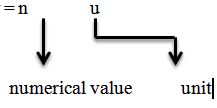
nu = Constant
![]()
Example: In a particular system, the unit of length,
mass and time are chosen to be 10cm, 10gm and 0.1 sec
respectively. The unit of force in this system will be
equivalen to:
- 0.1 N
- 1 N
- 10 N
- 100 N
Sol. Unit of force Þ F = ma = Kg metre /sec2
Here ![]()
F = 0.1 N So the Correct option is (a)
Example: The density of a material in CGS System of unit
is 4gm/cm3. In a system of units in which unit
of length is 10cm and unit of mass is 100 gm the
value of density of material will be
(a) 0.04
(b) 0.4
(c) 40
(d) 400
Solution. Given n1 u1 = 4 gm/cm3
n2 u2 = n1 u1
![]()
n2 = 40 Answer (a)
FUNDAMENTAL PHYSICAL QUANTITIES, UNITS, SYMBOLS

SUPPLEMENTARY UNITS
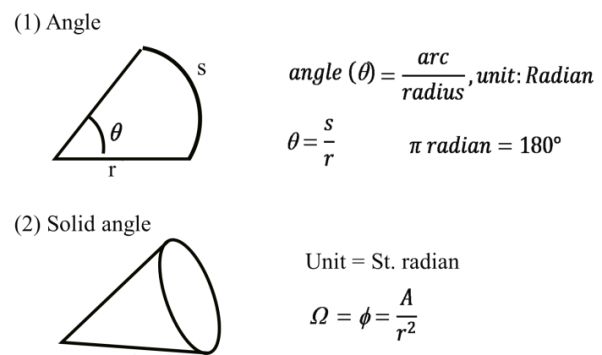
Derived Units: The units which may derive by
fundamental or Supplementry units
Ex. Force= ma = Kg mt/sec2
Conventions adopted while writing a unit
1. Even if a unit is named after a person it should
not be Capital initial letter.
Newton (no) Joule (no) Ampere (no)
or or etc.
newton (yes) joule (yes) ampere (yes)
2. In symbol for a unit named after a person
Newton ® N
Ampere ® A
Joule ® J
Watt ® w
3. The symbol or units are not expresse
d in plural form : 50 m (yes) , 10 joule (yes)
50 ms (no) , 10 joules (no)
4. Not more than one Solidus is used
1 poise = 1g/s cm or 1 gs-1
Homogeneity
Law of homogeneity
Here we can jump through +, - , = (signs)
![]()
and a,b, c- are Constant then find dimensional formula of a, b, c-
![]()
Apply Law of homoginity
Dimensional formula of v = dim-formula of at = v
![]()
Similarly we can say t = c Þ C = [T]
![]()
b = [L]
Example: The equation of state of some gases can be expressed as ![]() here p is pressure, V is the volume, T is temp. then the dimensional formula of Constants a and b will be ?
here p is pressure, V is the volume, T is temp. then the dimensional formula of Constants a and b will be ?
![]()
Apply Law of homoginity Dimensional formula of p = Dim-formula of ![]()
a = PV2 = ML -1T-2L6 =[ML5T-2]
Similarly dimensional formula of v = Dim. Formula of b b = v
= [L3]
ANS a = [ML5 T-2]
b = [L3]
Application No-3
Dimension less quantities or functions
(i) Quantities having units but dimensionless

So all trigonometric functions will be dimension less i.e. sin x, cos x, tan x – etc.
(ii) Quantities neither having units nor dimension
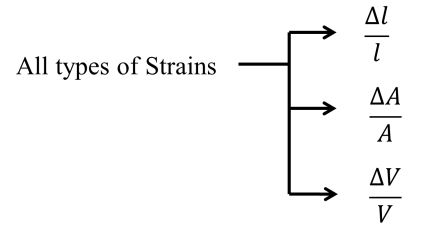
Refraction index![]()
Reynolds number, Relative density etc.
(iii) Dimension less mathematical functions
(a) Logarithmic functions: loge x or log10 x
(b) Exponential functions: ex, ax
![]()
(a) P
(b) R
(c) T
(d) V
![]()
![]()
![]()
![]()
![]() Correct answer is (a)
Correct answer is (a)
Example Nuclear force between nucleons is given by![]() Here F is force, r is distance, and c, k are Constants then find dimensional formula of C and k = ?
Here F is force, r is distance, and c, k are Constants then find dimensional formula of C and k = ?
![]()
Here e-kr is dimension less
So C = Fr2 = M L T-2 L2 = [M L3 T-2]
No because e-kr is dimension less
So k = 1/r
= [L-1]
Ans: dimensional formula of
C = [M L3T-2]
K = [L-1]
Systems of Units, Dimensional Formluas
SYSTEMS OF UNITS
(1) MKS AND MKSA SYSTEM
Here in this system M® meter, K® Kilogram, S ®Second and A® ampere
Physical quantity Unit in MKS or MKSA System
![]()
![]()
![]()
…….. and so on
(2) SI SYSTEM (INTERNATIONAL SYSTEM)
Here in this system unit of physical quantities are use to be named after different great Scientists.
Physical quantity
Unit in SI System
- Force ® newton or N
- Energy ® joule or J
- Power ® watt or W
(3) CGS SYSTEM
Here C® Centimeter, G ® gram, S ® Second
Physical quantity Unit in CGS System
![]()
![]()
![]()
….and so on
(4) FPS SYSTEM
Here F ® foot, P ® pound , S ® second
Force ® pd ft/ sec2, Similarly other physical quantities
Dimensional and dimensional formula
Dimensional formula
Almost all physical quantities can be expressed in terms of the seven fundamental units in symbolic form.
Dimensions
Dimensions of a physical quantity are the powers to which we must be raised to fundamental quantity represent the given physical quantity.
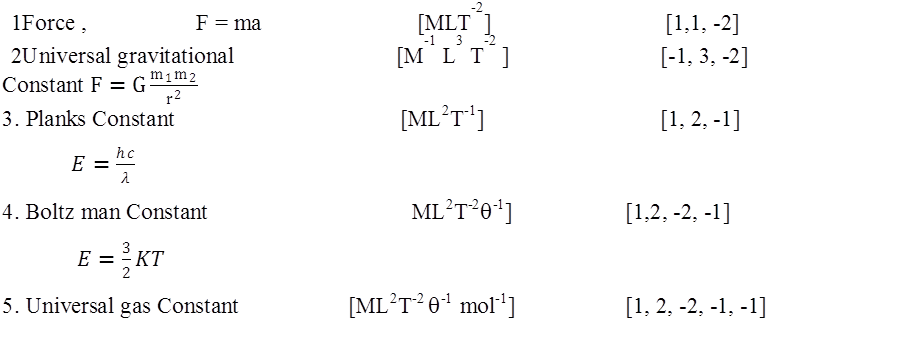
……. And so on
APPLICATIONS OF DIMENSIONAL FORMULAS
Application No. (1)
To establish results
Suppose any mass m is moving along a circular path of radius R with uniform speed of V. If the force required to do so is F then establish the result or relation between F, m, v and R.
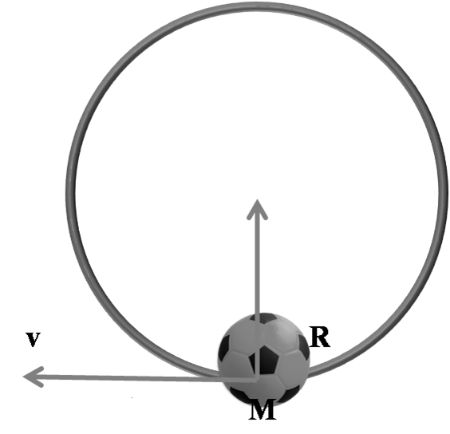
Given ,
F = k mx vY RZ
F a mx vY RZ
[M L T -2] = K [M] x [LT -1] y [L] z
[M LT-2] = K [Mx Ly+z T-y ]
Comparing both sides
X =1, y + z = 1, - y = - 2 Þ y = 2
2 + z = 1
Z = 1 - 2 = - 1
By experiment Constant K = 1
So we have result F = m1 v2 R-1 Þ![]()
Example 1 Given a simple pendulum of very small bob of mass connected with a light String of length l. Also given acceleration due to gravity is g and time period T of simple pendulum depends on mass of the bomb, length of the String l and acceleration due to gravity g then establish result for T.
Given
T a m x l y g z
T = k mx l y g z
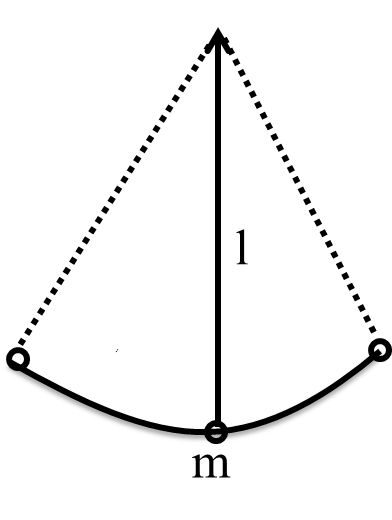
[M° L° T1] = K [M]x [L]y [LT-2]z
Þ [M° L° T1] = k [M x L y + z T -2z]
Compare both Side
x = 0, i.e. Time period will not depend on mass of the bob Y + z = 0
Compare both Side
x = 0,i.e. Time period will not depend on mass of the bob Y+ z = 0
![]()
![]()
By experiment k = 2p
![]()
Example: In a system of units , if force F, acceleration A and time T are taken as fundamental units then the dimensional formula of energy is
(a) [F A2 T]
(b) [F A T2]
(c) [F2 AT]
(d) [FAT]
Solution: Let energy denote by E
Then E a Fx Ay Tz
E = Fx Ay Tz
[M L2 T-2] = [M L T-2]x [ LT-2]y [T]Z
[M L2 T-2] = [Mx Lx+y T-2x-2y +z]
Compare both Sides
x =1 , - 2x – 2y + z = -2
x + y = 2 - 2x1 -2 x1 + z = -2
Þ Y = 1 - 4 + z = -2
Z = 4 – 2
Þ Z = 2
Therefore dimensional formula of energy E in Terms of FAT is [ F1 A1 T2] Þ [ FAT2] Ans B
Application No.2: To check the validity of any result.

 Kaysons Publication
Kaysons Publication
